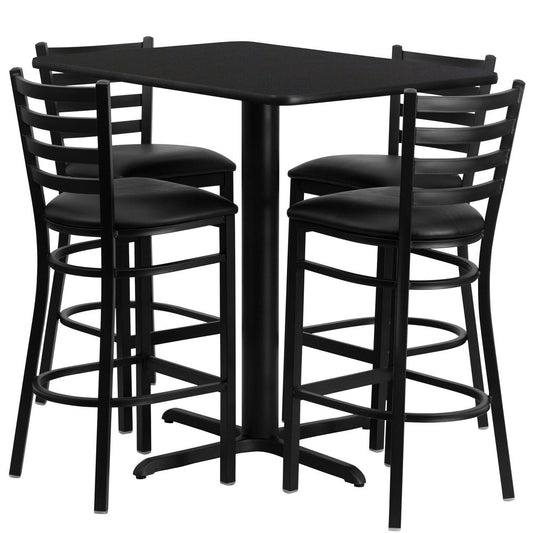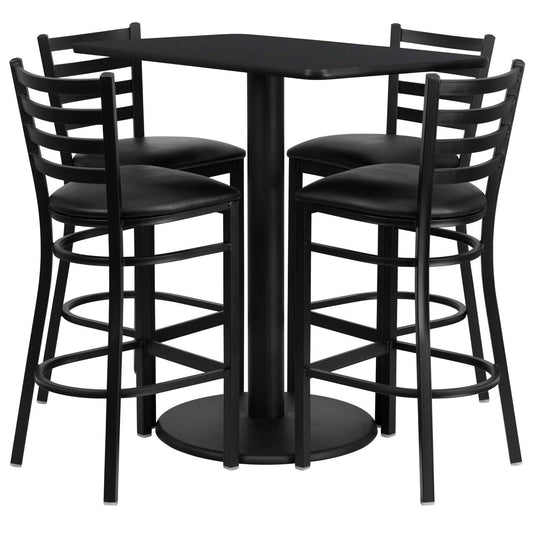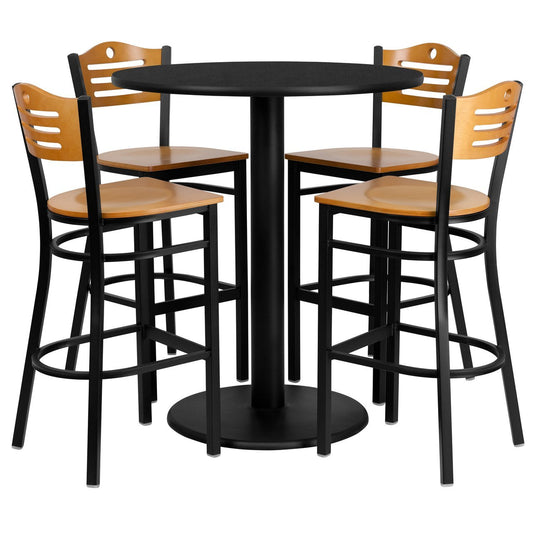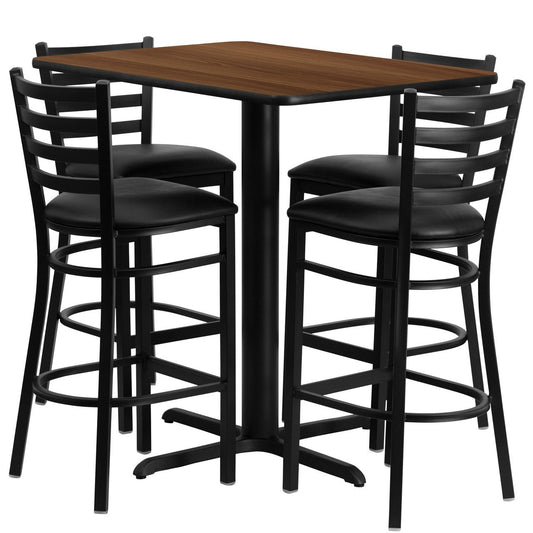
Types of Seating Arrangements for Every Restaurant Style
Share
The seating arrangement is crucial for any restaurant to attract customers. It also works on the restaurant’s appearance but also the eating ambiance, eating convenience, and even earnings. Regardless of whether you are opening a cafe, diner, or fine dining restaurant, the choice of seating plan can be an absolute deal make or break in your business. Due to the available ranges, it is important to know the types of seating styles that are available to provide your restaurant with good functionality and style.
This blog will explore different seating arrangements that are perfect for various restaurant styles, so you’ll be able to make a wise choice.
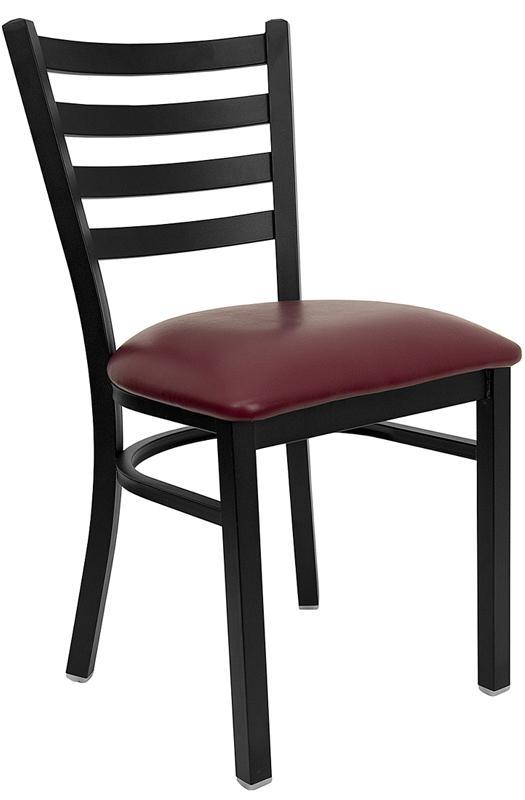
Heavy Duty Black Ladder Back Metal Restaurant Chair
Get the modern, stylish look you need with our "Big Boss" Black Ladder Back Metal Restaurant Chair. Crafted with an industrial-style frame finished in black, this chair provides a perfect option for restaurants, cafes or even home dining awaits.

8 Types of Seating Arrangements for Restaurants
The most important aspect of the design and arrangement of a restaurant when you decide to open one is the seating arrangement. This will be the main decision that will determine the further planning of your restaurant business. Take a look at the types of seating arrangements for every cafe, restaurant, and food industry:
1. Banquette Seating
Most casual dining and fine dining have some form of banquette seating also known as booth seating. These are long, upholstered benches that are designed in a way to accommodate more than one diner at a time. A banquette seating is usually positioned against a wall, making efficient use of floor space. Such a position makes the interior look homey and intimate, which is ideal for family restaurants and romantic spots.
Pros:
- Maximizes seating capacity, making it suitable for smaller spaces.
- Provides a comfortable and intimate dining experience.
- Enhances aesthetics with customizable upholstery.
Cons:
- Limited flexibility; it is difficult to rearrange for different group sizes.
- Can make it hard for servers to access certain tables.
2. Communal Tables
Communal seating is an unrestricted system of incorporation where the dining tables in the restaurant are mostly circular and can seat numerous persons and is also a flexible system of incorporation where different groups of people share the same table. This setup promotes socializing and is widely used in casual dining occasions, food halls, breweries, and cafes. The style of dining chairs prevents boredom and makes people in the restaurant feel like they are part of a large family.
Pros:
- Promotes a social dining experience.
- Allows for high seating capacity in a small space.
- Ideal for quick turnaround as it encourages fast dining.
Cons:
- Not ideal for intimate or private dining experiences.
- May not be suitable for all demographics, especially older customers who may prefer more privacy.
3. Bar Seating
Bar seating is crucial mainly for restaurants with pop or many assortments of drinks and especially cocktails. It’s also ideal for clients dining alone, or those who would just grab a meal on the go. Metal bar stools with backs can be placed along the bar counter where people can observe the bartender preparing cocktails or talking. It is rather interesting that some of today’s restaurants might have a chef’s counter, through which the guests can watch the cooking process.
Pros:
- Provides an interactive dining experience.
- Utilizes unused space around the bar.
- Suitable for solo diners or small groups.
Cons:
- Can be uncomfortable for long meals due to higher seating.
- Not ideal for families or those with mobility issues.
4. Outdoor Seating
Outdoor dining areas are locations such as patio dining, outside sidewalk dining, dining rooftop, or garden dining. This way of sitting gives a comfortable and fresh look, which can improve the attractiveness of the restaurant’s territory notably during the warm season. It is a popular food item found easily in cafes, bistros, and even restaurants located on the beachfront.
Pros:
- Provides a fresh and open-air dining experience.
- Increases seating capacity without expanding indoor space.
- Adds a unique appeal that can attract customers during nice weather.
Cons:
- Dependent on weather conditions, making it unpredictable.
- Additional maintenance may be required to keep outdoor furniture clean and durable.
5. High Top Tables
The High-top tables are larger than usual dining tables and contain stools just like the ones used for the bar. They are evident in most of the sports bars, Cafes, and restaurants that offer a relaxed environment. Such a placement also prevents hurried movement and fosters interaction casually.
Pros:
- Creates a casual and lively atmosphere.
- Suitable for smaller spaces due to smaller table sizes.
- Great for watching sports or casual gatherings.
Cons:
- Not suitable for formal dining experiences.
- Can be uncomfortable for longer meals due to higher seating.
6. Traditional Table and Chair Setup
The traditional table and chair arrangement can be regarded as the most popular one that might meet in various restaurants starting from the fast food ones and ending with rather posh ones. This kind of arrangement is quite convenient and suitable for different numbers of people; it could be for two, four, or larger groups.
Pros:
- Offers great flexibility in rearranging tables for different group sizes.
- Suitable for all types of restaurants.
- Provides a more formal dining experience when necessary.
Cons:
- May not maximize seating capacity as effectively as other arrangements.
- Less intimate compared to booth seating.
7. Private Dining Rooms
Private dining rooms are for the customers who believe in going for an exclusive experience. These rooms may be used for reception and celebration purposes, conducting meetings, or events. Some common mezzanine uses include having one or more private dining rooms which are a standard feature for fine dining restaurants as well as other high-end facilities.
Pros:
- Offers a unique, exclusive dining experience.
- Suitable for private parties or events.
- Can command a higher price due to the premium service.
Cons:
- Requires more space, which may not be available in all restaurants.
- May not be frequently used, depending on the type of clientele.
8. Counter Seating
Counter seating is applicable in different dining specialty environments, whether basic or more luxurious, such as sushi bars. This kind of arrangement is always appropriate in places such as the new fad of having kitchens exposed to clients’ sight. Counters essentially refer to a long servery with chairs or stools aligned along the bar-like structure.
Pros:
- Provides an interactive and engaging dining experience.
- Maximizes space, especially in smaller restaurants.
- Ideal for quick bites or solo dining.
Cons:
- Limited to certain restaurant types.
- Not suitable for large groups or families.
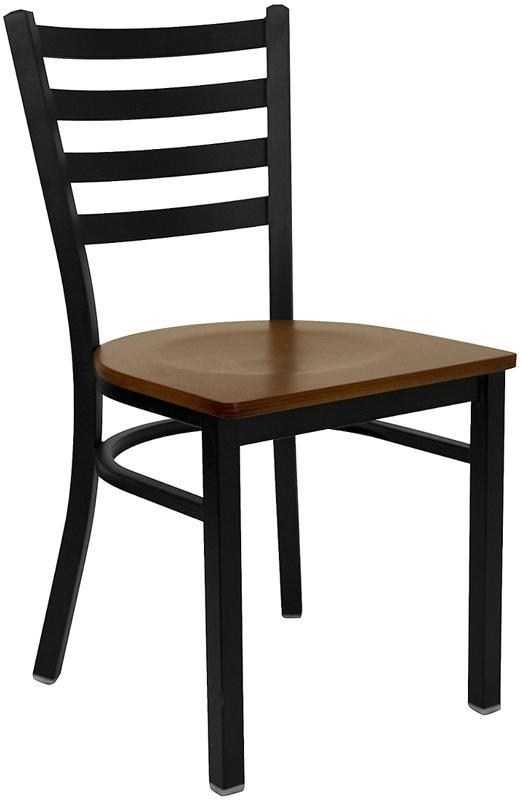
Heavy Duty Black Ladder Back Metal Restaurant Chair
Create a first-rate dining experience by offering your patrons great food, service and attractive furnishings. The metal chair is a popular choice for furnishing restaurants, cafes, pool halls, lounges, bars and other high traffic establishments. This chair is easy to clean, which is an important aspect when it comes to a business.
Choosing the Right Seating Arrangement for Your Restaurant
When deciding on a seating arrangement for your restaurant, consider the following factors:
- Space Availability: The amount of floor space you have will determine which types of seating can be accommodated. Banquette seating and communal tables work well in smaller spaces, while larger spaces can incorporate a variety of seating options, including private dining rooms and lounge seating.
- Target Demographic: Think about the type of customers you expect. Families may prefer booth seating for privacy, while younger customers may enjoy communal tables or bar seating for socializing.
- Restaurant Style: Your restaurant's theme and style play a huge role in choosing the right seating. Fine dining establishments benefit from traditional table settings and private rooms, while casual eateries may opt for high-top tables, restaurant bar seating, and communal arrangements.
- Customer Flow and Comfort: Consider how your positioning of tables and chairs affects mobility and the traffic of your restaurant. Custodian and staff accessibility as well as customer maneuverability could help improve service delivery and the time taken to produce a dining experience.

31.5'' x 63'' Rectangular White Metal Indoor
This indoor-outdoor rectangular metal cafe table will add a trendy, industrial-chic look to your restaurant or dining room at home. Measuring 31.5 inches wide by 63 inches long, this table will comfortably accommodate six chairs. It features a smooth surface with a 1 inch thick edge and a stabilizing brace that gives it increased stability while still allowing ample leg room.
Conclusion
The right seating arrangement can enhance a restaurant's appearance, optimize space utilization, and improve overall efficiency. If you take into consideration your restaurant's style, target, as well as the size of your restaurant area, you’ll be able to pick differing and functional ideal seats.
Whether you’re thinking about table arrangement or the general layout of your restaurant, common options include table and bar seating and less conventional types of banquettes and lounges. Stylish metal bar stools are a popular choice for bar areas, offering both durability and ease for guests who stay longer.

